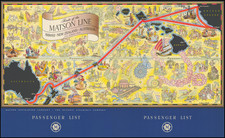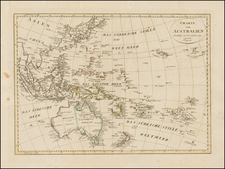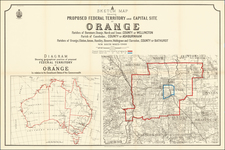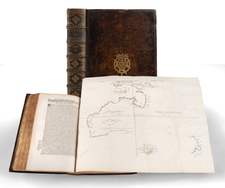This 1864 chart of Bass Strait is a remarkable representation of the extensive hydrographic surveys conducted by the British Navy during the 19th century. These surveys aimed to map uncharted territories and provide valuable information for navigation and scientific understanding of the region. One key figure in these endeavors was John Lort Stokes, a talented naval officer and hydrographer who played a significant role in charting the Australian coastline.
The chart includes 11 inset mappings of various harbors, islands, and other noteworthy features.
By 1843, the Beagle was on its third voyage (1837-1843) under the command of John Clements Wickham and John Lort Stokes, primarily surveying the coastlines of Australia and New Guinea.
John Lort Stokes (1811-1885) joined the British Navy in 1824. He joined the crew of the H.M.S. Beagle, where he served under various commanders, including the period from 1831 to 1836, when Charles Darwin undertook his voyages.
In 1837, Stokes was commissioned by the British Hydrographic Office to chart unknown parts of the Australian coastline aboard the Beagle and later became the ship's commander in 1841. Through his travels, Stokes circumnavigated Australia twice, discovered the Fitzroy, Albert, and Flinders rivers, and charted the legendary graveyard of sailing ships known as Bass Strait. During the survey of the Timor Sea in 1839, Stokes undertook the closer examination of what is now the Northern Territory coast. He was the first to discover and name the Victoria River and Port Darwin (named for Charles Darwin). Upon his return to England, he authored Discoveries in Australia, with an account of the coasts and rivers explored and surveyed during the voyage of the Beagle, 1837-1843 which was published in 1846.
The 1864 chart of Bass Strait stands as a testament to the meticulous work of John Lort Stokes and his fellow surveyors aboard the H.M.S. Beagle. Their efforts greatly contributed to the understanding of the Australian coastline and the wider region, paving the way for future exploration, settlement, and trade. Today, the chart serves as a valuable historical artifact that offers a glimpse into the rigorous and adventurous work of 19th-century naval surveyors.














![(Tasmania) A Chart of van Diemen's Land, the South Extremity of New Holland [on sheet with:] Continuation o fthe River from King George's Bay, on a larger Scale. with the Situation of the Ships Duke and Duchess, at Anchor.](https://storage.googleapis.com/raremaps/img/small/94750.jpg)

